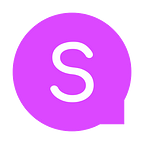It makes me sad when I think back on my education and my childhood and consider that today’s students will never know the joys of learning about conjunctions with a little train conductor running a conjunction junction. I gave my students a chance to experience Schoolhouse Rocks when we were learning about the preamble of the United States Constitution (which I can still pull up off the top of my head, thanks to that song). I had the same feeling of nostalgia when we started reviewing conjunctions.
Conjunctions can serve three main purposes: coordinating, correlative, and subordinating. Coordinating conjunctions join words, phrases, and clauses (sentences) that share grammatical structure and rank. Correlative conjunctions work together to connect words, phrases, and clauses. Our final type of conjunction is subordinating conjunctions. These conjunctions connect a dependent clause with an independent clause.
Although all three serve their own purpose, most people will use correlative and subordinating without even realizing it. I will briefly touch on those two, but the majority of my time will be spent on the proper use of coordinating conjunctions. It is also important to note that conjunctions require a comma when joining two independent clauses. (I’m watching your commas, TrinityUnderdog!)
Coordinating Conjunctions
There are three main coordinating conjunctions that we use in most of our writing. These are “and”, “or”, and “but”. You see them in use everyday:
- I love beans, and I love rice. This is great for listing things or joining two independent clauses that are in agreement.
- Should I get the hamburger, or should I get tacos? This lists options that are available to choose from.
- I love this color, but I don’t love this dress. You use this for contrast. One of the words, phrases, or clauses is positive, and the other is negative.
Some less common ones are “for”, “so”, “nor”, and “yet”. Some example sentences for these four include:
- I hadn’t eaten, so I quickly cooked up some eggs. We use this for giving a reason behind an action or a consequence for an action.
- She was large, for she enjoyed desserts quite frequently. This is what I call the “fancy version” of because. It serves the same purpose and explains the why behind the first clause.
- I didn’t want that shirt, nor did I want the pants. There are two negative clauses that connect. You could also consider this the negative version of “and”.
- I knew I needed to leave, yet I kept stopping to look at things. This is another way of showing contrast. It’s similar to “but”.
Do you notice the use of commas, TrinityUnderdog? (Her comma use — or lack of — is exhausting for my brain…)
Correlative Conjunctions
Correlative conjunctions are pairs of conjunctions that work together for the words, phrases, and clauses. There are many of these, but once you know what to look for, they’re easy to spot. Some examples are in the image below. Correlative conjunctions are used to write sentences like these:
- I will either get the fish or the chicken.
- I will have both a water and a soda.
- I study so much that I will definitely pass.
- I would rather stay home than go to the store.
Subordinating Conjunctions
Subordinating conjunctions are the main type of conjunction that connects a dependent clause to an independent clauses. These types of conjunctions usually don’t require commas, because you are not joining two independent clauses together with a conjunction. Please, do not use commas with this type of conjunction. I’m looking at you, TrinityUnderdog.
- I like cake and candy.
- You can have soup or salad.
- I want this dress but not in that color.
When it comes to using conjunctions, you don’t need to identify them by name. However, it’s important to know at least a little bit about them. After all, subordinating conjunctions look similar to coordinating conjunctions, but the biggest difference is comma usage.
Are you having trouble using conjunctions? Follow me on Instagram @Madam_Tatas, and I’ll help you out.
-MadamTatas
